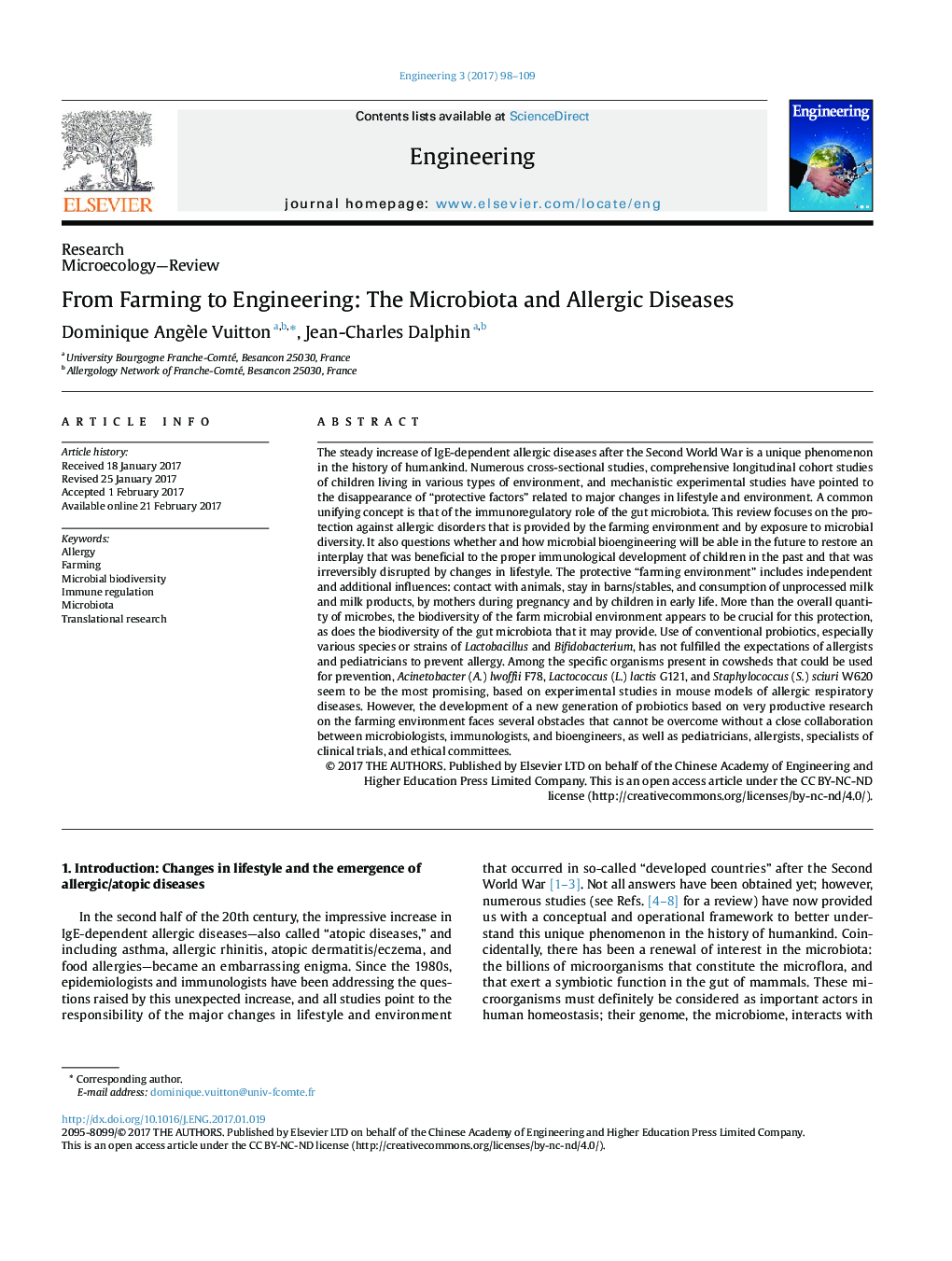| کد مقاله | کد نشریه | سال انتشار | مقاله انگلیسی | نسخه تمام متن |
|---|---|---|---|---|
| 4959223 | 1364854 | 2017 | 12 صفحه PDF | دانلود رایگان |
The steady increase of IgE-dependent allergic diseases after the Second World War is a unique phenomenon in the history of humankind. Numerous cross-sectional studies, comprehensive longitudinal cohort studies of children living in various types of environment, and mechanistic experimental studies have pointed to the disappearance of “protective factors” related to major changes in lifestyle and environment. A common unifying concept is that of the immunoregulatory role of the gut microbiota. This review focuses on the protection against allergic disorders that is provided by the farming environment and by exposure to microbial diversity. It also questions whether and how microbial bioengineering will be able in the future to restore an interplay that was beneficial to the proper immunological development of children in the past and that was irreversibly disrupted by changes in lifestyle. The protective “farming environment” includes independent and additional influences: contact with animals, stay in barns/stables, and consumption of unprocessed milk and milk products, by mothers during pregnancy and by children in early life. More than the overall quantity of microbes, the biodiversity of the farm microbial environment appears to be crucial for this protection, as does the biodiversity of the gut microbiota that it may provide. Use of conventional probiotics, especially various species or strains of Lactobacillus and Bifidobacterium, has not fulfilled the expectations of allergists and pediatricians to prevent allergy. Among the specific organisms present in cowsheds that could be used for prevention, Acinetobacter (A.) lwoffii F78, Lactococcus (L.) lactis G121, and Staphylococcus (S.) sciuri W620 seem to be the most promising, based on experimental studies in mouse models of allergic respiratory diseases. However, the development of a new generation of probiotics based on very productive research on the farming environment faces several obstacles that cannot be overcome without a close collaboration between microbiologists, immunologists, and bioengineers, as well as pediatricians, allergists, specialists of clinical trials, and ethical committees.
Journal: Engineering - Volume 3, Issue 1, February 2017, Pages 98-109
